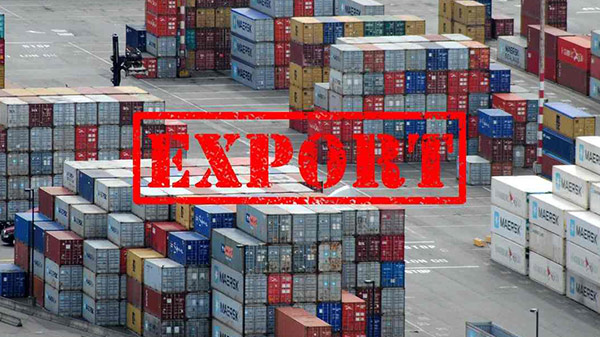Promoting Exports of Agricultural Products from India

A top of mind question anyone will have, when we talk of agricultural exports is, “what happens to the availability and prices of food in the domestic market?”
After all, India has 17% of world’s population, but only 12% of arable land and 4% of fresh water resources… Should we be exporting at all?
But, exports not only have the potential to improve farmer incomes – an important necessity, given the low per capita GDP of the farm sector in India – but also, quite counter intuitively, can keep the domestic prices low and stable!
Such a possibility is real today because the world is transiting from a policy of self sufficiency at national level to a philosophy of resource efficiency at global level. Instead of all the countries trying to produce every food product they need – an approach started after the first world war and intensified after the second world war – each country is now moving towards maximising production of what they are good at, given their natural endowments, and importing what they have to. That’s the only way to feed a larger, richer and more urban global population by 2050. In any case, the goal of self sufficiency is unsustainable – per an estimate, when the per capita food consumption of developing nations reaches today’s global average (mind you, not the average of world’s rich nations), we need two more earths to satisfy the demand even after factoring the productivity gains from all known technologies!
India has a great opportunity in this backdrop, because (1) we have rich & diverse agro-climatic conditions, and (2) there is significant headroom for improvement in farm productivity.
But the game has to be played differently, to grab this opportunity. Today, we are less than 2% of global agri exports; of our own total exports, agri constitutes just about 10%; and, within agri, share of value added products is not even 10%
The new way of playing this game is to adopt a two pronged strategy, with three distinct action areas under each strategy…
Strategy 1: Focus on specific crops & products where India has comparative advantage.
This is key, because, to date, India has been an adhoc exporter of whichever commodities left over as surpluses after domestic consumption.
Action Area 1: Ministry of Commerce already has schemes such as Focus Product Scheme and Market Linked Focus Product Scheme. What is required is an institutionalised mechanism within the Ministry of Agriculture to select the products from the agri & allied sector. Such a mechanism could actively involve the exporters too, besides the representatives from the State Governments.
My first cut recommendation would include spices, marine products, processed cereal products, fresh vegetables and processed fruits, and meat products.
Action Area 2: As important as the task of selecting the products to be focused upon, and more important than offering some standard financial incentives to such products as is being done conventionally, it is critical to tailor-make country level strategies suitable to specific competitive contexts of those products.
For example, the Duty Draw Back on chilly exports from India is 1%, which does not even neutralise the incidence of direct and indirect taxes, while China offers an export subsidy of 5% on whole chilly exports and 15% on processed chilly products. The Tariff Rate Quotas imposed by the USA on leaf tobacco blunts the competitiveness of Indian leaf tobacco; and India is denied duty free access given by the EU to similar imports from the LDCs. India must take up such cases of discrimination strongly in the international fora.
Action Area 3: Value added exports must be encouraged, to retain more value within India, rather than relying on basic commodities. A key first step in this regard would be to announce a stable export policy, instead of banning exports every now & then. Only then exporters will invest in product development and branding. To keep the domestic supplies in tact in years of shortage, the exporters could be asked to balance the stock by importing.
Additionally, differential incentives, as described in the Chinese chilly example mentioned earlier, for raw and processed products will help push value added exports and build Indian brands.
Strategy 2: Enhance the inherent competitiveness of Indian agriculture. In the focus products, to start with.
Action Area 1: Transform the current supply-driven value chains into demand-driven value chains. This requires transmission of real-time demand signals from the consumers to the producers, so that they are able to align production and quality to serve the market. New technologies need to be inducted to raise farm productivity. Active engagement of private sector in agricultural extension and marketing is essential to accomplish these two objectives. Reforming of APMC Acts allowing ‘Direct Marketing’ and ‘Contract Farming’ is a prerequisite to enable such an engagement.
Action Area 2: Reduce costs along the agricultural chain. This could be done by minimising tax incidence and improving infrastructure efficiencies.
Ironically, even the taxes exempted in spirit are incurred by exporters of agri products, given the agri-specific market dynamics, because of the way the exemption provisions are written. For example, sales tax is exempted on purchases made for export purpose; but, it is mandatory that the purchases must take place after procuring the export order to qualify for such exemption. In case of agricultural products, given their natural seasonality of production, purchases have to be made in season without necessarily having export orders on hand; otherwise one has to sell in distress. Or pay the sales tax!
Larger investments into agri infrastructure could be attracted by removing the caps on subsidies applicable to warehouses built under Grameen Bhandaran Yojana and the Scheme to strengthen Agricultural Marketing Infrastructure. Also, the Zero Duty EPCG Scheme may be extended to cover investments in the entire agricultural value chain.
Action Area 3: Reduce risks in farm production and output prices, by building institutional mechanisms such as Weather Insurance and Commodity Derivative Markets.
As per the RBI guidelines, corporates are allowed to hedge their price risks in the international commodity exchanges only if the position is backed by export / import contracts. In concept, this is very similar to the sales tax exemption procedure. Exporters of Agri commodities need to purchase raw material stocks during the season, not only for export orders on hand, but many times also in anticipation of future export orders. Thus the exporter who wishes to manage the price risk inherent in such domestic raw material purchases in advance, against fluctuating prices in international market, does not have an option to hedge on international commodity exchanges. As a result, the exporter is subjected to price risk till the time he obtains an export order for his product.
To reduce the price risk in exporting agri products, Indian exporters with an open stock position, even without prior export contracts should be allowed to hedge on the international commodity exchanges.
This is a summary of the presentation made to the Committee of State Agricultural Ministers on Marketing Reforms in Tirupati on Oct 30, 2012.










